"The difficulty of determining what is true"
There exists one direct exchange between parapsychology pioneer J.B. Rhine and pseudo-skeptic James Randi. It says it all.
“A thousand skeptic hands won't keep us from the things we plan / Unless we're clinging to the things we prize.”—Howard Jones, Things Can Only Get Better
This is a parable of authentic versus pretended query in matters of parapsychology, or scientific study of ESP and related anomalies. It requires background. Because background, and the facts that compose it, are exactly what pseudo-skepticism has obfuscated.
* * *
In the late 1920s, parapsychologist J.B. Rhine (1895-1980) and his wife and intellectual partner Louisa Rhine (1890-1983) began work at what became the Parapsychology Laboratory at Duke University. The Rhines’ efforts to test for ESP and other psi phenomena inaugurated parapsychology as an academic field.
Criticism was swift and, at times, withering. First, critics attacked the math. It stood up. Sir Ronald Aylmer Fisher (1890-1962), then one of the worldwide authorities on statistics and probability, wrote J.B. on August 20, 1934: “I should judge that your method somewhat exaggerated the significance of the combined result”—he was no sympathizer—“but not to a sufficient amount to affect your conclusions.”
Validation continued. Parapsychologist Dean Radin noted in the 2010 edition of his book, The Conscious Universe:
The early statistical criticisms were finally settled by statistician Burton Camp of Wesleyan University. Camp was the president of the Institute of Mathematical Statistics in 1937. In December of that year, he released a statement to the press that read: “Dr. Rhine’s investigations have two aspects: experimental and statistical. On the experimental side mathematicians, of course, have nothing to say. On the statistical side, however, recent mathematical work has established the fact that, assuming that the experiments have been properly performed, the statistical analysis is essentially valid. If the Rhine investigation is to be fairly attacked, it must be on other than mathematical grounds.
Undaunted, psi skeptics assailed the Rhines’ experiments on grounds of replicability. One recently wrote my colleague Stacy Horn, author of the impeccable Unbelievable, this slightly clunky statement on Facebook: “First of all, as I know you know,”—this is stock skeptic phraseology—“Duke’s Parapsychology Lab because their methods didn’t hold up to basic scientific standards. The Rhines ran studies with poor controls, shaky statistics, and no ability to replicate results.”
That is wrong. In 2020, parapsychologist Rick Berger, Ph.D., broke down the numbers for the Parapsychological Association: “In the five years following Rhine’s first publication of his results, 33 independent replication experiments were conducted at different laboratories. Twenty (20) of these (or 61%) were statistically significant (where 5% would be expected by chance alone).”
In his 1975 presidential address to the Parapsychological Association, a professional society for parapsychologists, Charles Honorton (1946-1992) said:
Even among parapsychologists there is a rather widespread belief that most of the independent replication of the early Duke work were non-confirmatory and I suspect this may be especially true among those of us who were not around in the 1930’s (which, incidentally, accounts for about three-fourths of the participants at this convention). In fact, I was surprised myself to find that this wasn’t so when I undertook a review of all the English-language ESP experiments reported during the period between 1934 and 1939.
Honorton’s effort involved a database of about 3.3 million individual trials. He described further:
During the five-year period following publication of J.B. Rhine’s Extra-Sensory Perception in 1934, the scientific community responded as it should to any claim of new discovery, by disseminating both positive and negative research findings, by careful scrutiny of the experimental and evaluative techniques, and by encouraging fresh replication efforts. During this period there were approximately 60 critical articles by 40 authors, published primarily in the American psychological literature. Fifty experimental studies were reported during this period, two-thirds of which represented independent replication efforts by other laboratories of the Duke University work.
Honorton found that “61 percent of the independent replications of the Duke work were statistically significant. This is 60 times the proportion of significant studies we would expect if the significant results were due to chance or error.”
What about those “poor controls”? Even close to fifty years later, the Rhines’ most implacable critics were still attempting to wish away their results by fantastical (and often feckless) fraud theories, including prominent English skeptic C.E.M. Hansel’s nearly vaudevillian supposition in his 1980 study ESP and Parapsychology that one of the test subjects, Hubert Pearce, repeatedly crawled through a ceiling space to peek at cards through a (nonexistent) trapdoor over the lab.
At such excesses, rationalists (or, as the record suggests, pseudo-rationalists) fail the test that Enlightenment philosopher David Hume (1711–1776) set for validation of miracles: counterclaims must be less likely than reported phenomena. For all that, belief, sentiment, and emotion die hard—if ever.
“The Amazing Randi”
Enter soi-disant skeptic, stage magician, and MacArthur Fellow James Randi (1928-2020), founder and reigning eminence of professional skepticism, eulogized by The Guardian as the “prince of reason.”
In a core sample of the prince of reason’s use of fraud—in defense of self-conceptualized rationalism—the psi-buster lied. Not “honestly,” as in a 2014 hagiographic documentary, but the regular kind.
As previously reported, Randi maintained an educational foundation whose activities were not always clear, though redounded him a $195,000 annual salary. The James Randi Educational Foundation issued a short guidebook for schoolteachers to teach students in grades 9 through 12 about ESP research and parapsychology. As of this writing, it remains available. Do You Have ESP?: Teacher Edition (copyrighted 2010 and 2012) states without sourcing: “It is now well established that Rhine and his colleagues had been allowing themselves to ignore much of the data they had collected and reported only those with positive results. Negative data were set aside.”
Rhine not only reported all results but, at a time when it was common practice among social scientists to report selectively, he took the lead in reversing that convention and elevating the general standards of the field.
In the 1940 book Extra-Sensory Perception After Sixty Years, Rhine and his collaborators assembled all data, including that which remained unpublished. They meta-analyzed everything before that practice was common or the term coined.
In a nearly remarkable exception, even Wikipedia, as of this writing, states in its article on “Meta-analysis:” “The first meta-analysis of all conceptually identical experiments concerning a particular research issue, and conducted by independent researchers, has been identified as the 1940 book-length publication Extrasensory Perception After Sixty Years.” (Watch for this to change. The James Randi Educational Foundation granted its 2017 award to the self-described “Guerilla Skeptics” who continually spike and rewrite Wiki pages on parapsychology to satisfy materialist politics.)
In his free teachers’ guide, Randi overtly misled grade-school educators into telling students that the problem with Rhine’s research is he hid bad results. After decades in the media, the leading skeptic knew the facts. This record—this record—is what moves a skeptic in 2025 to write, “as I know you know.”
Tension between query and sentiment is a flipped narrative compared to conventional perceptions. If what I describe can be historically embodied, the side of query appears in the persona J.B. Rhine—whose work is linked at the end of this article—with his Iago as The Amazing Randi, whose career I likewise document below. The media skeptic Randi, in his greatest performance, brutalized truth—including in his checkered Million Dollar Challenge—while heralding its virtue. Mark Twain could not have better satirized the matter.
The Challenge
Thanks to journalist Horn, I recently came into possession of a 1964 exchange of letters between the two men—the only such correspondence I personally know. It is housed in the Archives and Manuscripts Collection at Duke University.
Randi wrote to Rhine on occasion of the magician taking over the long-running late-night radio show hosted by Long John Nebel (1911-1978), the Art Bell of his era who popularized discussion of UFOs and the paranormal—topics Randi compactly defined in his 1982 study: Flim-Flam! Psychics, ESP, Unicorns, and Other Delusions
I found J.B.’s response to Randi’s invitation—which he politely refused—a fitting statement of ethics for virtually all media queries from low-rent hosts, producers, podcasters, and partisans.
Lest anyone think I avoid skeptics—I chase them. Two of the most credentialed—the estimable Michael Shermer, publisher of Skeptic magazine, and University of Kansas anthropology professor John Hoopes (who since proffering himself as a media skeptic has locked his “tweets”) have dodged my debate invitations. I have known Professor Hoopes, at times collegially, more than fifteen years.

In any case, Rhine’s reply appears below, along with images of both men’s letters and links to pertinent articles. I see Rhine’s statement as a manifesto of sound exchange in our unserious era.
I have taken an interest at times in Mr. Nebel’s program because of my feeling of the importance of having forums for the discussion of interesting and challenging questions and claims for which the more conventional and orthodox channels are not available.
One of the requirements for such a program is a certain quality of sincerity, or perhaps it might better be called a respect for truth, or an attitude of fairness to the facts. The difficulty of determining what is true and what is not and of eventually answering questions raised is what makes the discussion worth while. A certain amount of clash of egos and contention between partisans is tolerable if there is in the background an evident interest in finding a solution that is right. I think this is essential to keep the listener’s interest and his respect for the program. Merely putting on a program because it is lively and without care how it turns out would, I think, rob the rob the program of interest for me and many, many others.
Thoughtography
As I was completing this article, I discovered one last letter in this mini-saga between scientist and media skeptic. It sits in the Duke archives.
On September 29, 1967, Randi again wrote Rhine. His letter—oddly solicitous if subtly baiting—involved one of the strangest figures in parapsychology, Chicago hotel worker (and alcoholic) Ted Serios (1918-2006). Serios displayed apparent ability to “project” thought images onto film.
In 2004, philosopher and parapsychologist Stephen E. Braude wrote in the catalogue of the Metropolitan Museum of Art’s exhibition The Perfect Medium: Photography and the Occult: “The thoughtography of Ted Serios is undoubtedly the best documented, and arguably most impressive, case of all.”
Serios was the sole figure that MET curators treated—rightly—without conclusion of fraud. Not because curators “believed” in his thoughtography. But rather because they abided historical record, a practice that would not occur to Randi and partisans.
The magician routinely claimed, sans evidence, to have debunked Serios by replicating his alleged tricks. Critics said that Serios used a “gismo,” in Serios’s term—a small cylindrical device intended for focus, which was widely examined—to fake his thought images. Again Braude:
The primary source of this skeptical allegation was the article “An Amazing Weekend with the Amazing Ted Serios,” in the October 1967 issue of Popular Photography . . . the criticism then morphed into an unverified claim that Serios’s feats had been duplicated easily by the Amazing Randi.
Braude notes these claims twice repeated by professional skeptic Martin Gardner (1914-2010), whose career record of falsehood I document in my 2023 article, “The Crisis of Professional Skepticism.”
“It should be noted,” Braude continued,
that Gardner’s claim is unsubstantiated. Randi has never even attempted to duplicate the Serios phenomena under conditions resembling those that prevailed during Serios’s tests. He did, however, fail to duplicate the phenomena under the looser conditions prevailing on the television show Today on 4 October 1967.
Randi, like a slightly wounded paramour with sharpened teeth, sought Rhine’s attention for the television appearance. His entreaty is below.
There is no record of J.B. responding.
Truth Telling
Do sincere psi skeptics exist? Of course—they are rare. Perhaps the finest among them, sociologist Marcello Truzzi (1935-2003), called himself a “constructive skeptic.” Truzzi originated a principle later attributed to astronomer Carl Sagan (1934-1996): “Extraordinary claims require extraordinary evidence.”
A critic contemporaneous to J.B., psychologist Donald K. Adams (1902-1960), stands out as a sincere skeptic. In 1934, Adams and two colleagues wrote to William McDougall, head of Duke’s psychology department, complaining that Rhine’s work was sullying the department.
As Stacy Horn has recorded, Adams, in an act of extraordinary scrupulousness—who among us ever changes his mind?—recanted two years later after studying Rhine’s methods. With startling self-honesty, Adams concluded in his essay “The Natural History of a Prejudice”:
I wanted not the truth, but to prove his positive conclusions wrong . . . I would have been disappointed instead of delighted at discovering a new phenomenon . . . Science, with a capital S, has no prejudice, but individual scientists have . . . Have you ever had the experience of seeing a belief, that you have considered fundamental to everything you value, gradually but inexorably undermined? . . . I have never had much sympathy for the embattled Fundamentalists, but since facing a situation comparable in many ways to theirs and finding that I behaved just as badly, their conduct no longer seems so strange.
Recent to this writing, I gave an hour-long interview to a television producer who is writing a popular book on anomalous phenomena. “I don’t know if you’re gonna like the book,” he later told me. “Because I debunk certain things around ESP.” He had not taken in the substance of what I said.
In matters of ESP, certainly I want to be right. J.B. Rhine wanted to be right. But I would rather the facts go against me a hundred times than falsify or cheapen any of them. To the seeker and intellect, flipping over the chessboard is never an option. Beyond any attachment to parapsychology—Howard Jones calls it “the things we prize” in the epigraph—integrity of search is what matters. In J.B.’s response to Randi, he calls it “the difficulty of determining what is true.”
This is the authentic legacy of Rhine and his immediate circle. May we honor it—wherever it leads.
* * *
Below are links to referenced articles and select resources. I realize that my criticisms of James Randi evoke pushback. Any reader who sends me links, either in comments or privately (mitch.horowitz.nyc@gmail.com), demonstrating sound work done by Randi as a skeptic will have my reading attention and, if requested, response.
For those interested in the history and findings of parapsychology, please check out my seven-part historical podcast, Extraordinary Evidence: ESP Is Real:
Extraordinary Evidence: ESP Is Real | Episode 1: Moonrise
For millennia, humanity has pursued higher knowing. In antiquity, soldiers and statesmen turned to oracles such as the prophetess at Delphi and pictogrammatic language of the I Ching.



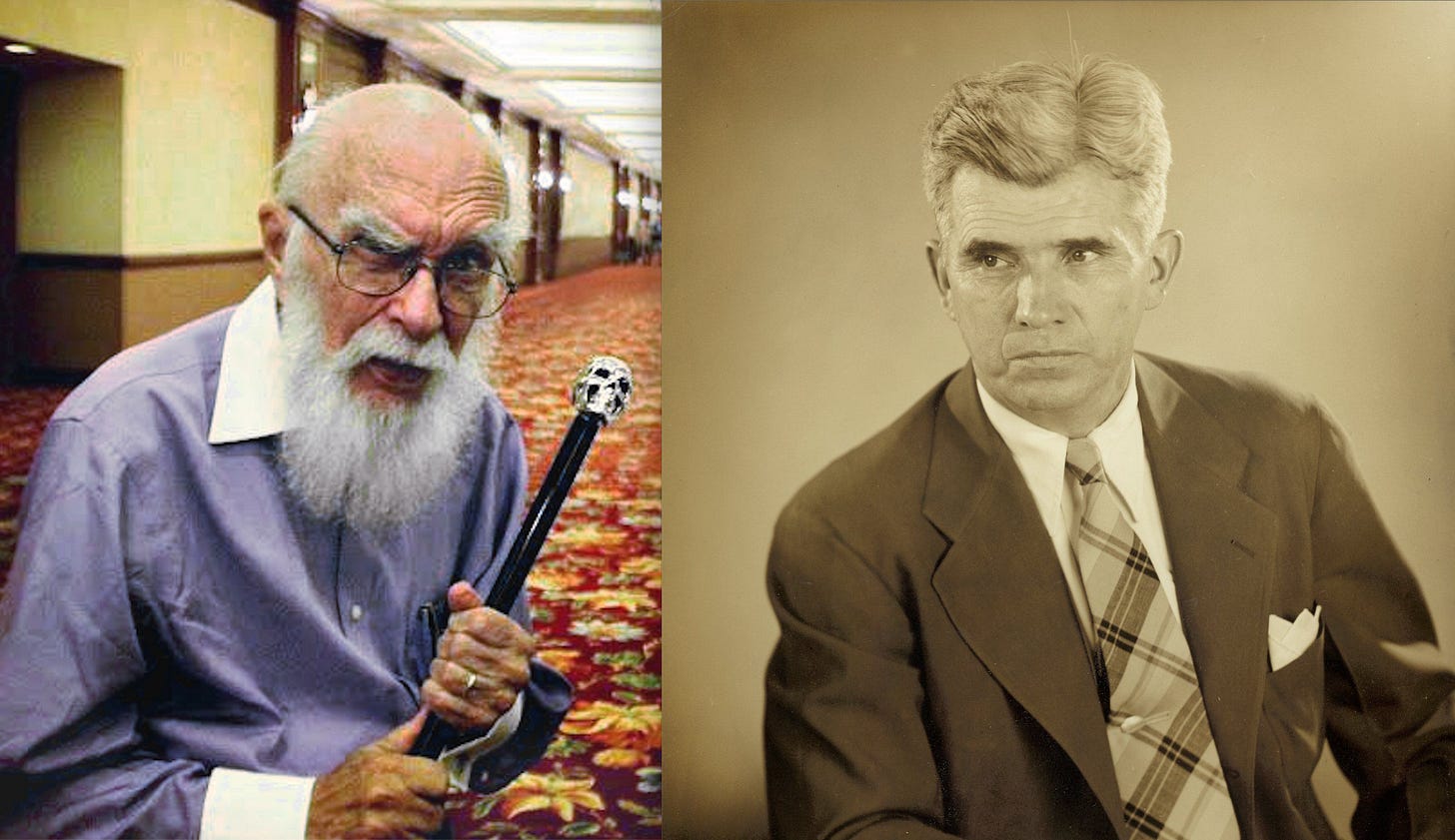
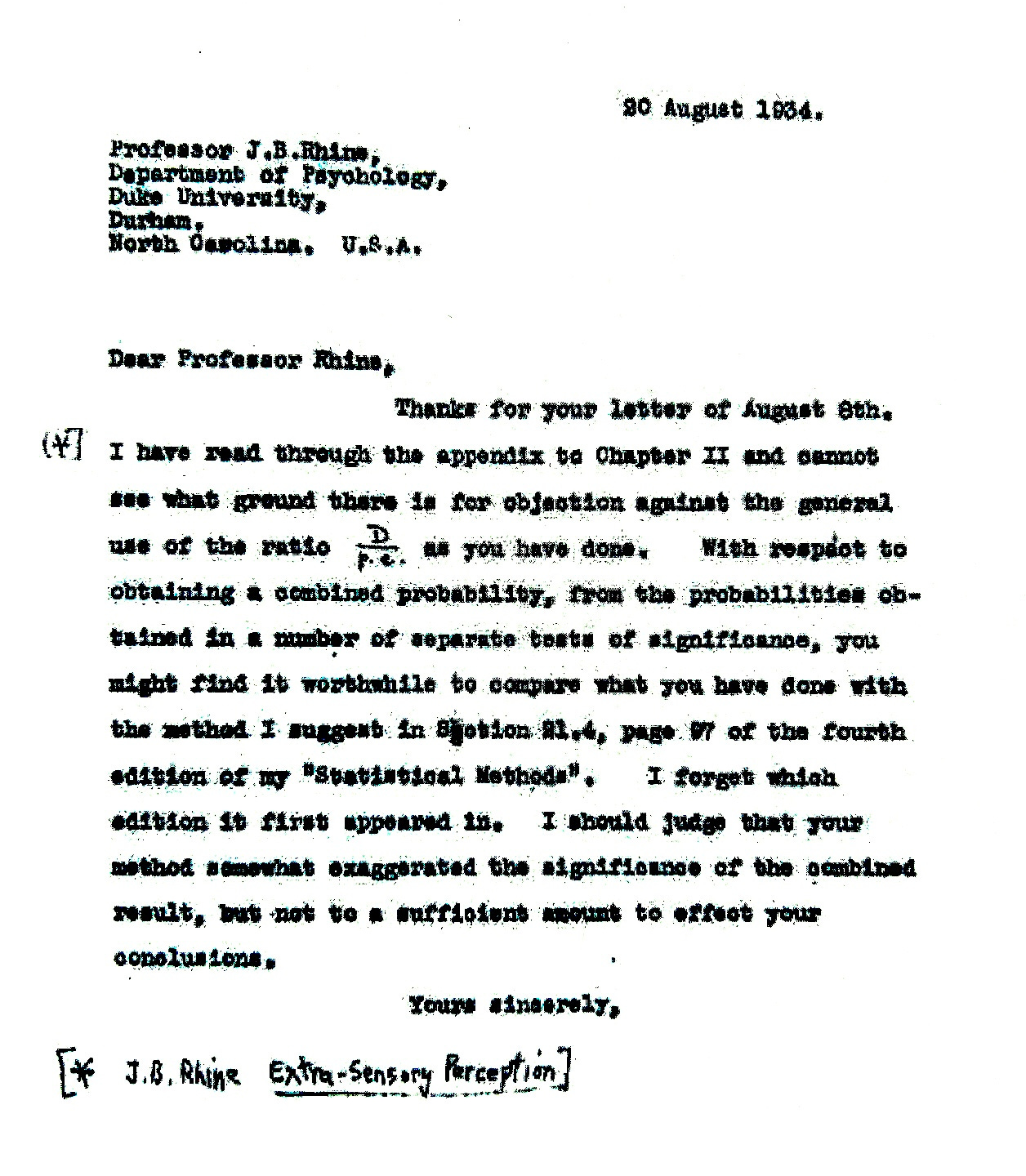
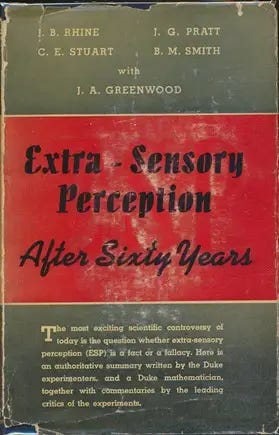
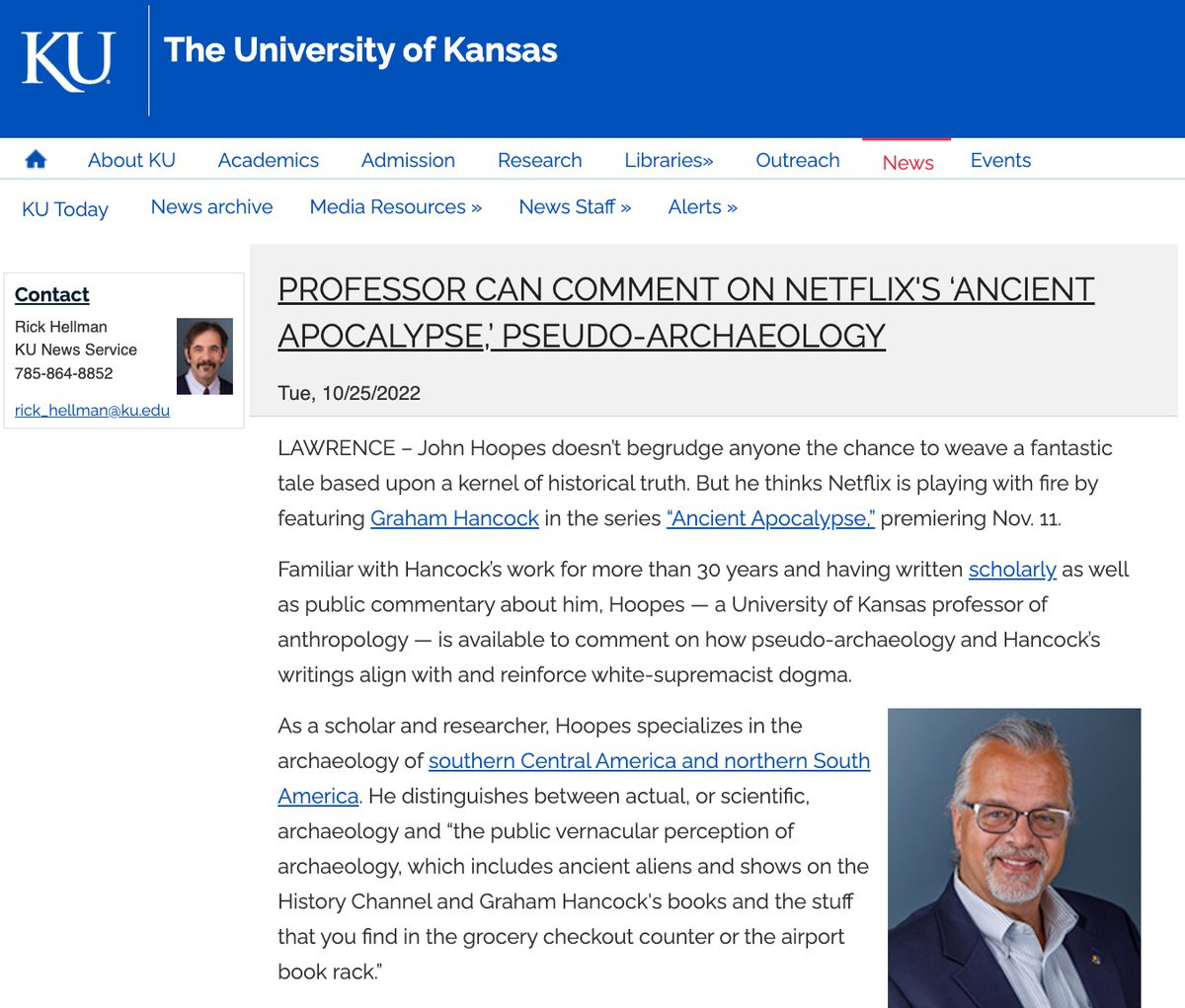
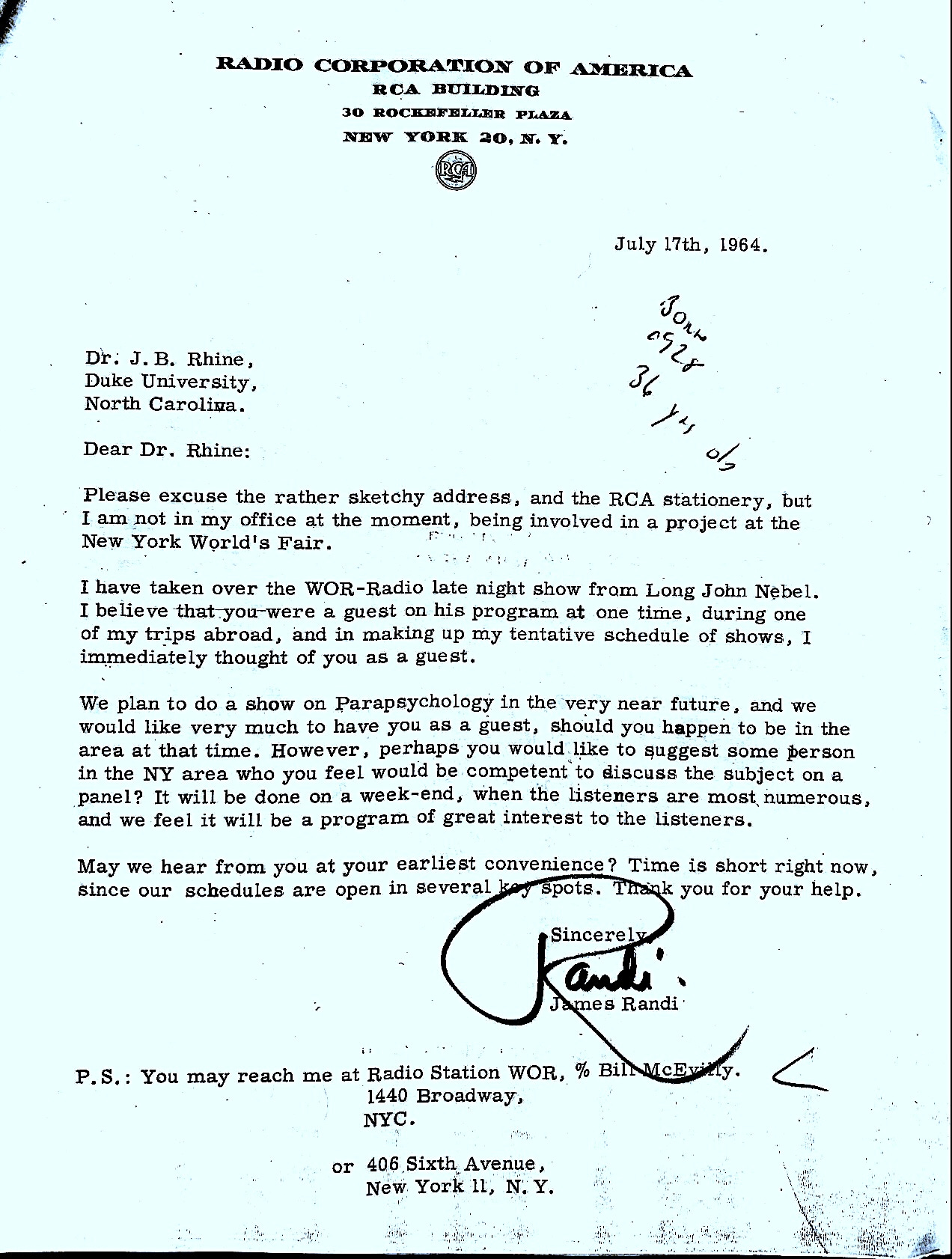

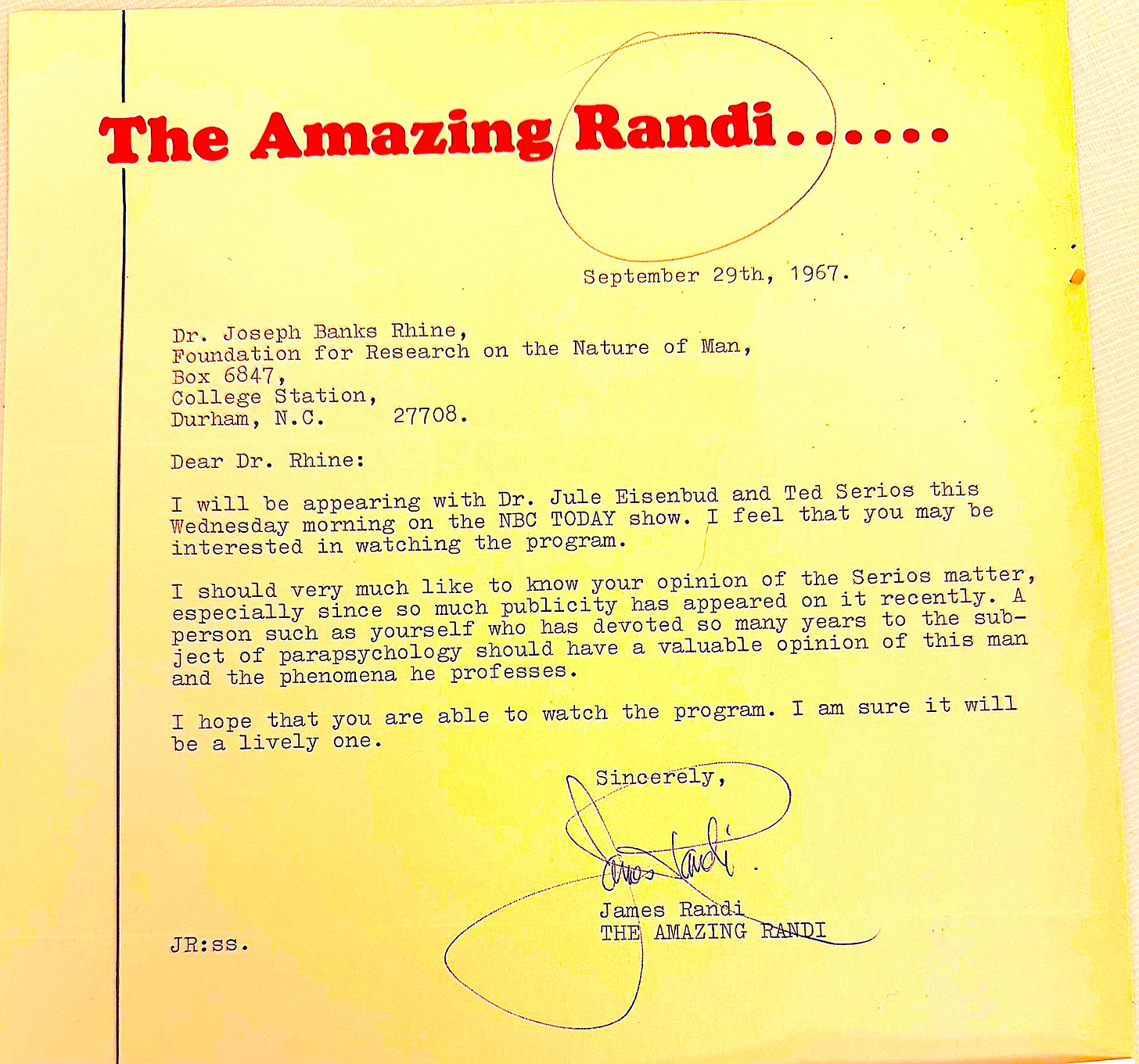

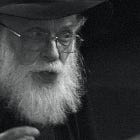
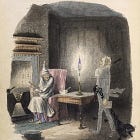
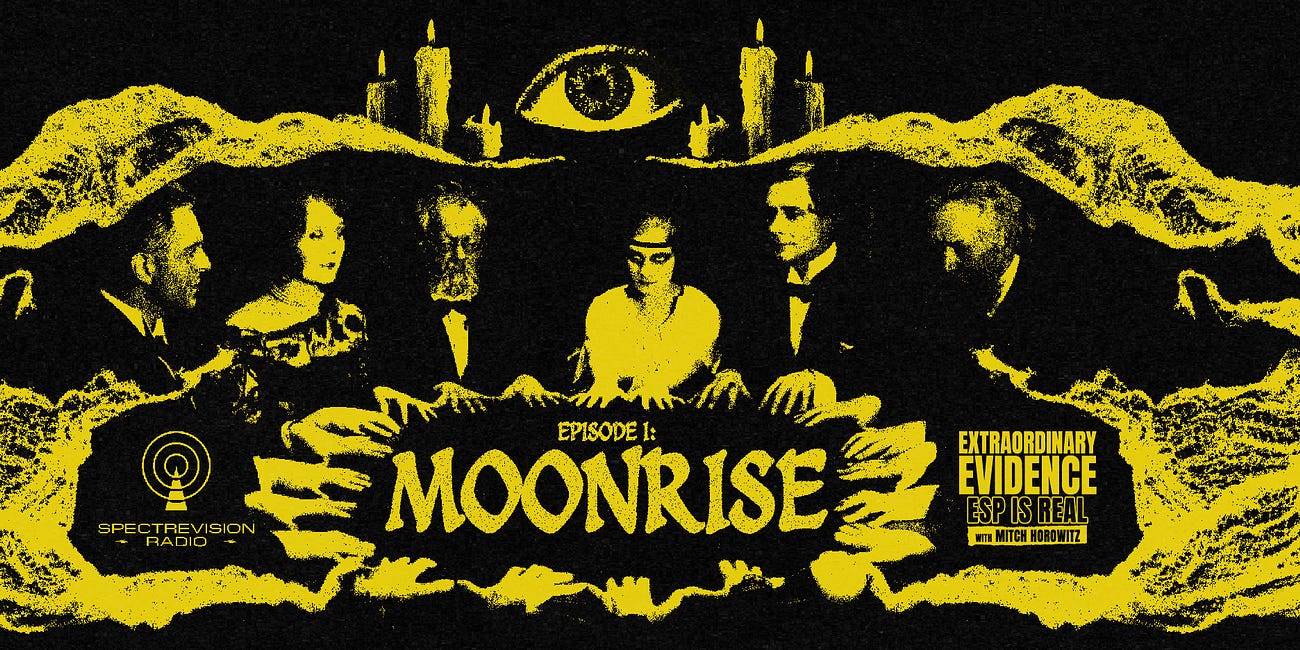
Much nicer listen without all those 'underscores' - thanks!
Really appreciated this deep dive into the history and drama around Rhine’s work. It’s wild how the debate between genuine inquiry and knee-jerk skepticism is still so relevant, especially when you see how facts get twisted to fit a narrative. Rhine’s commitment to transparency is inspiring. Makes me wonder how many other fields could use a dose of that kind of integrity.